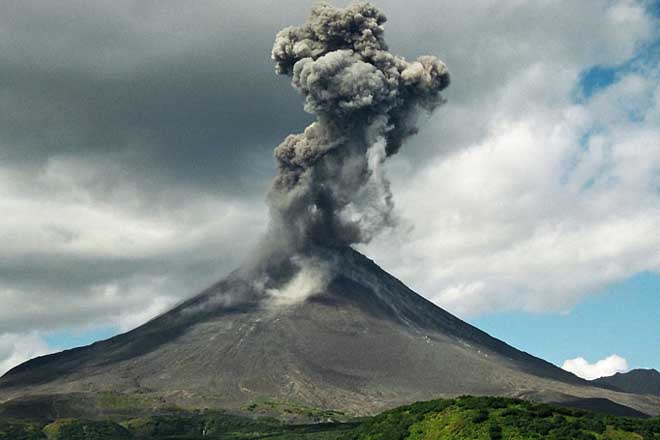Chile's Chaiten volcano began spitting lava on Tuesday following its first eruption in thousands of years, and nearby residents in the southern region of Patagonia were being evacuated aboard Navy warships.
Chaiten erupted last Friday, sending a towering plume of ash into the sky that has since coated the surrounding area and reached into neighbouring Argentina.
The National Emergency Office said the volcano was spitting bits of molten rock on Tuesday, and that remaining civilians and troops were being evacuated across a fjord. However, no lava flow had yet been detected down the volcano's sides.
Local television reported loud groaning sounds emanating from the 3,280-foot (1,000-meter) volcano, which had been dormant for thousands of years.
"The situation has changed suddenly," national emergency official Rodrigo Rojas said in an interview.
"Today the volcano is erupting with pyroplastic material on a different scale," he added. "We ... have ordered the immediate precautionary evacuation of all civilians, military and press in Chaiten."
Around 150 civilians were aboard warships waiting in the fjord off Chaiten, around 760 miles (1,220 km) south of Chile's capital, Santiago.
But 30 residents, many of them elderly, refused to board, the Navy said. Around 170 security personnel were still waiting at the dock.
Around 4,200 people, or nearly the whole population of Chaiten which is six miles (10 km) from the volcano, have already been evacuated.
Sparsely populated Patagonia is a swathe of southern Latin America which cuts across Chile and Argentina and is home to towering snow-capped peaks, glaciers and log cabins, and is a gold mine for dinosaur fossil hunters.
DENSE CLOUD OF ASH
Luis Lara, a government geologist, said he did not expect a catastrophic collapse of the Chaiten volcano, but that a cloud of dense, very hot material could coat the surrounding area.
"This produces a more complicated scenario," Lara said. "A dense cloud of pyroplastic material could move down its slopes, and that causes much more damage (than a spray of lava)."
"The entire volcano will not (collapse), but the eruptive column could, and that is sufficient material to be displaced down its sides and into areas nearby," he added. "Lava flow would not reach Chaiten, but hot fragments, ash and gas could."
A second town, Futaleufu, has also been coated with ash and is being evacuated. The area is some distance from Chile's vital mining industry farther north.
Some of Futaleufu's 1,000 or so residents have already crossed into neighbouring Argentina, where some areas have also been showered with thick ash and where flights and schools were suspended.
Argentina is not evacuating residents from the worst-affected zones, instead advising them to stay indoors.
"It's a horrible situation. Sometimes it goes all dark and it doesn't stop raining ash," said Cecilia Rimoldi, a resident of the southern Argentine tourist town of El Bolson.
The ash is more than 6 inches (15 cm) thick in some places near Chaiten, contaminating water supplies and coating houses, vehicles and trees. Thousands of head of cattle are being moved out of the area.
Chile has the world's second most active string of volcanoes behind Indonesia. It is home to 2,000 volcanoes, 500 of which experts say are potentially active. Around 60 have erupted over the past 450 years, AP reported.






